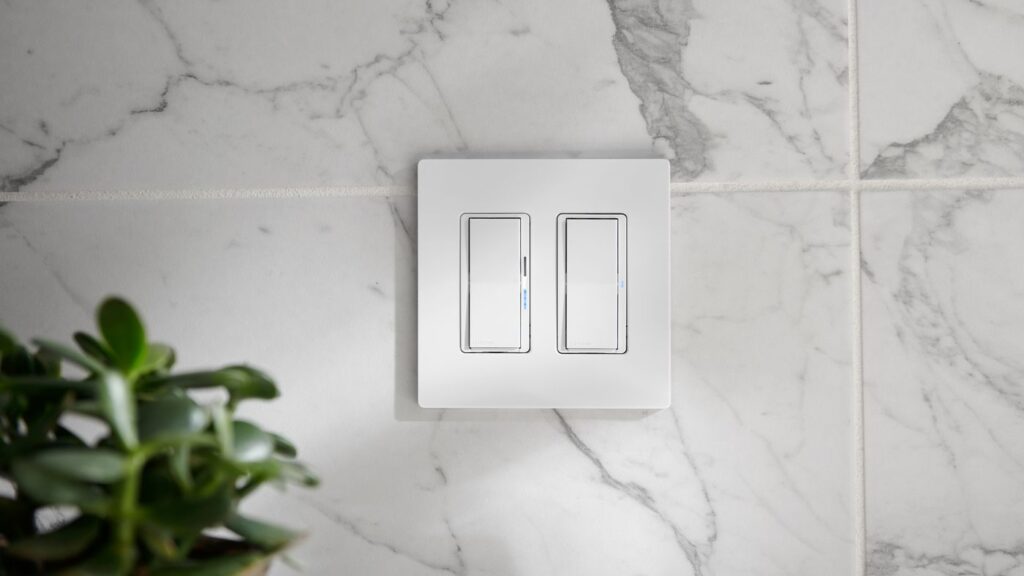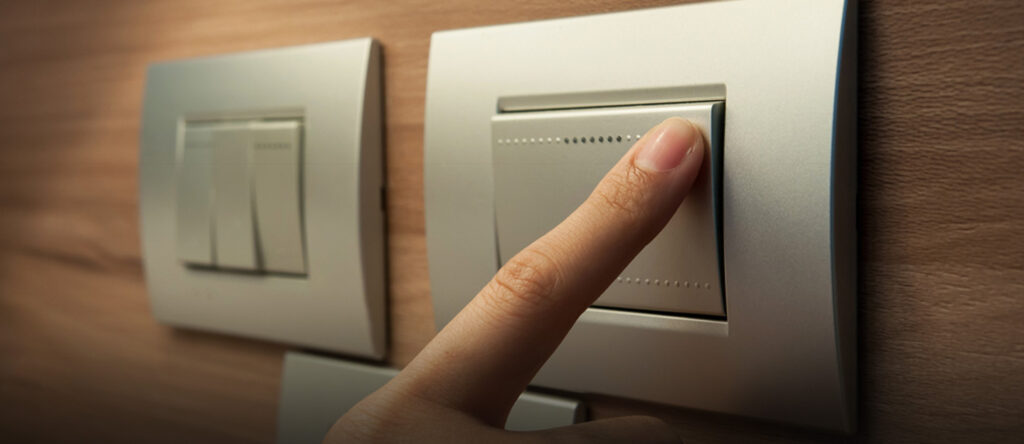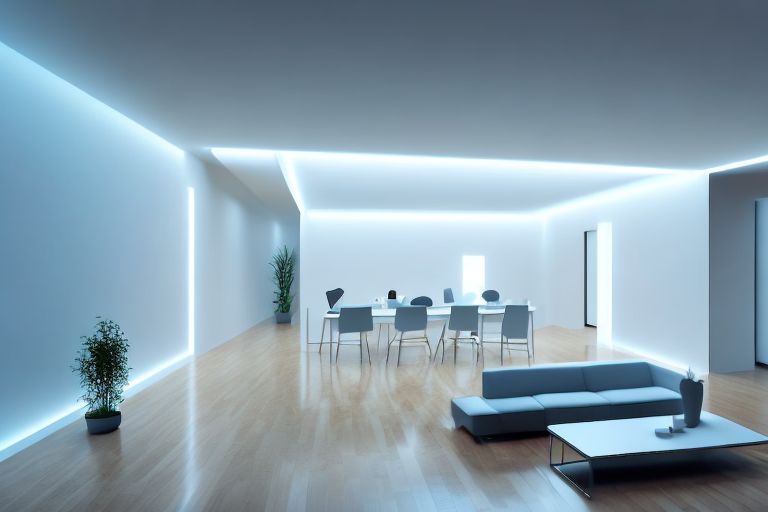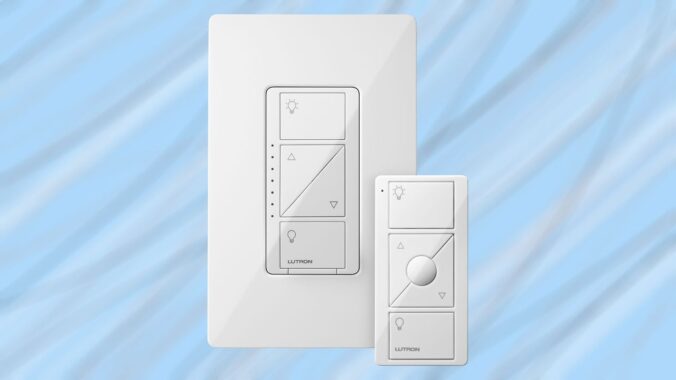Light switches may seem like a small detail in your home, but choosing the right one can make a big difference in both functionality and aesthetics. With so many options available, it can be overwhelming to navigate through the different types and features. In this comprehensive guide, we will walk you through everything you need to know about choosing the right light switch for your space.
Understanding Different Types of Light Switches
Before diving into the various factors to consider, let’s start by understanding the different types of light switches available. This knowledge will help you make an informed decision based on your specific needs.
Single-Pole Switches
A single-pole light switch push button is the most common type of light switch found in homes. It controls a single light fixture, allowing you to turn it on or off with a simple flip. This type of switch is suitable for most residential applications.
Three-Way Switches
Three-way switches are used in situations where two switches control the same light fixture. They are commonly found at the top and bottom of a staircase or at the entrances of large rooms. With a three-way switch, you can turn the light on or off from either location.

Dimmer Switches
If you want to have control over the brightness of your lights, dimmer switches are the way to go. These switches allow you to adjust the light intensity, creating the perfect ambiance for any occasion. Dimmers are commonly used in dining rooms, bedrooms, and living rooms.
Smart Light Switches
Smart light switches offer advanced features and compatibility with home automation systems. They can be controlled remotely through smartphone apps or programmed to turn on and off at specific times. Smart switches provide convenience, energy efficiency, and customization options for your lighting needs.
Now, let’s delve deeper into the world of light switches and explore some additional types that you may come across:
Toggle Switches
Toggle switches are a classic choice for controlling lights. They feature a lever that you can flip up or down to turn the lights on or off. These switches are not only functional but also have a nostalgic charm, making them a popular choice for vintage-inspired interiors.
Rocker Switches
Rocker switches have a sleek and modern design. Instead of a lever, they have a flat, rectangular button that you can press on one side to turn the lights on and the other side to turn them off. These switches are easy to use and are often found in contemporary homes and offices.
Push Button Switches
For a touch of elegance and sophistication, consider installing push button switches. These switches have a button that you push to toggle the lights on or off. They add a touch of vintage charm and are commonly found in older homes or spaces with a retro aesthetic.
By understanding the different types of light switches available, you can choose the one that best suits your needs and complements your interior design. Whether you prefer the simplicity of a single-pole switch, the convenience of a smart switch, or the versatility of a dimmer switch, there is a perfect option out there for you.
Factors to Consider When Choosing a Light Switch
Now that you have an overview of the different types of light switches, let’s explore the factors to consider when making your selection.
Functionality
Consider how you will be using the light switch. For example, if you have multiple entry points to a room, you may need a three-way switch. This type of switch allows you to control the same light fixture from two or more locations. It’s perfect for those long hallways or large rooms where convenience is key. On the other hand, if you want to create a cozy atmosphere, a dimmer switch could be ideal. With a dimmer switch, you can adjust the brightness of your lights to set the mood just right. By understanding your specific needs, you can choose a switch that enhances the functionality of your space.
Aesthetics
Light switches are available in a variety of styles and finishes, allowing you to find one that suits your personal taste and complements your interior decor. If you prefer a traditional look, you can opt for a switch with a classic toggle design. These switches have a timeless appeal and can add a touch of elegance to any room. On the other hand, if you prefer a more modern design, you can choose a switch with a sleek and minimalist appearance. These switches often feature touch-sensitive panels or stylish push buttons, adding a contemporary flair to your space. Whichever style you choose, make sure the switch seamlessly blends in with the overall aesthetic of your room.
Ease of Installation
If you plan to install the light switch yourself, it’s important to consider the level of difficulty. Some switches require basic wiring knowledge and can be easily installed by following the provided instructions. These switches often come with clear diagrams and step-by-step guides, making the installation process hassle-free. However, there are switches that may require professional installation, especially if they involve complex wiring or if you’re not confident in your electrical skills. In such cases, it’s always a good idea to consult a qualified electrician to ensure a safe and proper installation.

Cost
Budget is always an important consideration when making any purchase, and light switches are no exception. Light switches vary in price depending on their features, quality, and brand. While it’s tempting to go for the cheapest option available, it’s important to consider the long-term value and durability of the switch. Investing in a high-quality switch may cost more initially, but it can save you money in the long run by lasting longer and requiring fewer replacements. Take the time to explore different options within your budget and choose a switch that provides the best value for your investment.
When choosing a light switch, it’s crucial to consider functionality, aesthetics, ease of installation, and cost. By taking these factors into account, you can select a switch that not only meets your practical needs but also enhances the overall look and feel of your space. So, go ahead and explore the wide range of light switches available, and make a choice that illuminates your home in more ways than one!
The Role of Light Switches in Interior Design
Light switches play an essential role in interior design, going beyond their basic functionality. Let’s delve into how light switches can enhance the overall aesthetic of your space.
When it comes to interior design, every detail matters. From the furniture to the wall colors, each element contributes to the overall ambiance of a room. Light switches may seem like a small detail, but they can make a big impact on the overall design.
Matching Switches with Decor
To create a cohesive look, choose light switches that match your existing decor. Whether you have a traditional, industrial, or minimalist design, selecting switches that blend in seamlessly will elevate the overall appearance of your space.
Imagine walking into a room with a beautifully designed interior, only to be met with a mismatched light switch that stands out like a sore thumb. By selecting switches that complement the style and color scheme of your space, you can ensure a harmonious and visually pleasing environment.
The Impact of Switch Placement
Switch placement is crucial to ensure convenience and usability. Consider the location of switches, especially in high-traffic areas, to ensure they are easily accessible. Properly placed switches can enhance the functionality and flow of your space.
Imagine trying to navigate a dimly lit hallway, fumbling around to find the light switch. By strategically placing switches at convenient locations, such as near doorways or at the top and bottom of staircases, you can improve the overall user experience and create a more welcoming atmosphere.
Choosing the Right Switch Color
The color of your light switch can have a significant impact on the overall aesthetic. For a sleek and modern look, opt for switches with a minimalist design and neutral colors. Alternatively, you can make a bold statement with switches that contrast or complement the wall colors.
Consider a room with a vibrant accent wall. By choosing a light switch color that either matches or contrasts with the wall color, you can create a visually striking focal point. On the other hand, if you prefer a more understated look, opting for a switch that blends in seamlessly with the wall color can create a seamless and cohesive design.
As you can see, light switches are not just functional devices; they are an integral part of interior design. By paying attention to details such as matching switches with decor, strategic switch placement, and choosing the right switch color, you can elevate the overall aesthetic of your space and create a visually pleasing environment that reflects your personal style.

Safety Considerations for Light Switches
While aesthetics and functionality are important, safety should always be a priority when choosing light switches. Let’s explore some safety considerations to keep in mind.
Understanding Electrical Ratings
Ensure that the light switch you choose is rated for the electrical load it will be controlling. Check the voltage and current rating to prevent overloading and potential hazards. If you are unsure, consult a professional electrician to ensure safety.
Importance of Grounding
Proper grounding is essential for electrical safety. Make sure the light switch you choose has a grounding connection to protect against electrical shocks and potential damage to your electrical system. Always follow proper grounding procedures during installation.
Child Safety Features
If you have young children in your home, consider switches with built-in child safety features. These features can include tamper-resistant outlets and switch covers to prevent accidental injuries or electrical mishaps.
When it comes to safety, it’s important to consider not only the light switch itself but also the surrounding environment. Take into account the location of the switch and whether it is easily accessible or within reach of children. If the switch is in a high-traffic area or near water sources, such as in a bathroom or kitchen, it’s crucial to choose a switch that is specifically designed for wet locations to minimize the risk of electrical accidents.
Another safety consideration is the presence of flammable materials near the switch. If the switch is located in a garage or workshop where flammable substances are stored, it’s important to choose a switch that is made of non-combustible materials and has a high resistance to heat. This will help prevent accidental fires and ensure the safety of your space.
Choosing the right light switch for your space is not just about functionality, but also about enhancing the overall aesthetics and ensuring safety. By understanding the different types of switches available and considering factors such as functionality, aesthetics, ease of installation, and safety considerations, you can make an informed decision that meets your specific needs. Remember to consult professionals when necessary, and enjoy the improved lighting experience in your home.
More to read: Exploring the Convenience of Dimmer and Smart Light Switch Solutions

Leave a Reply